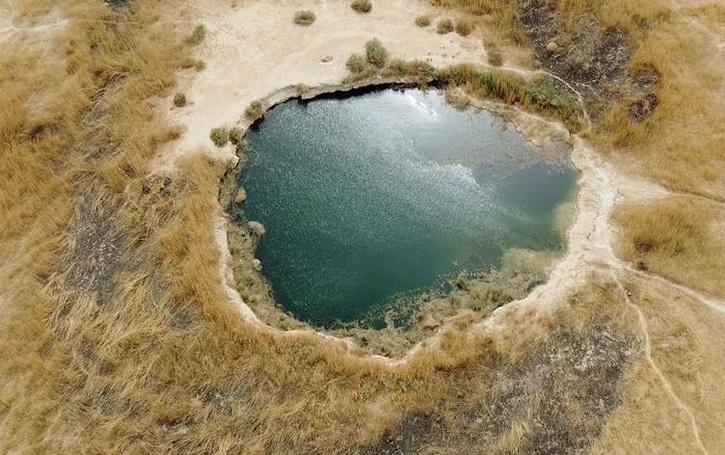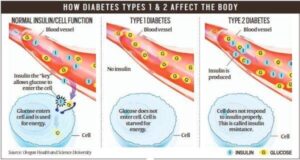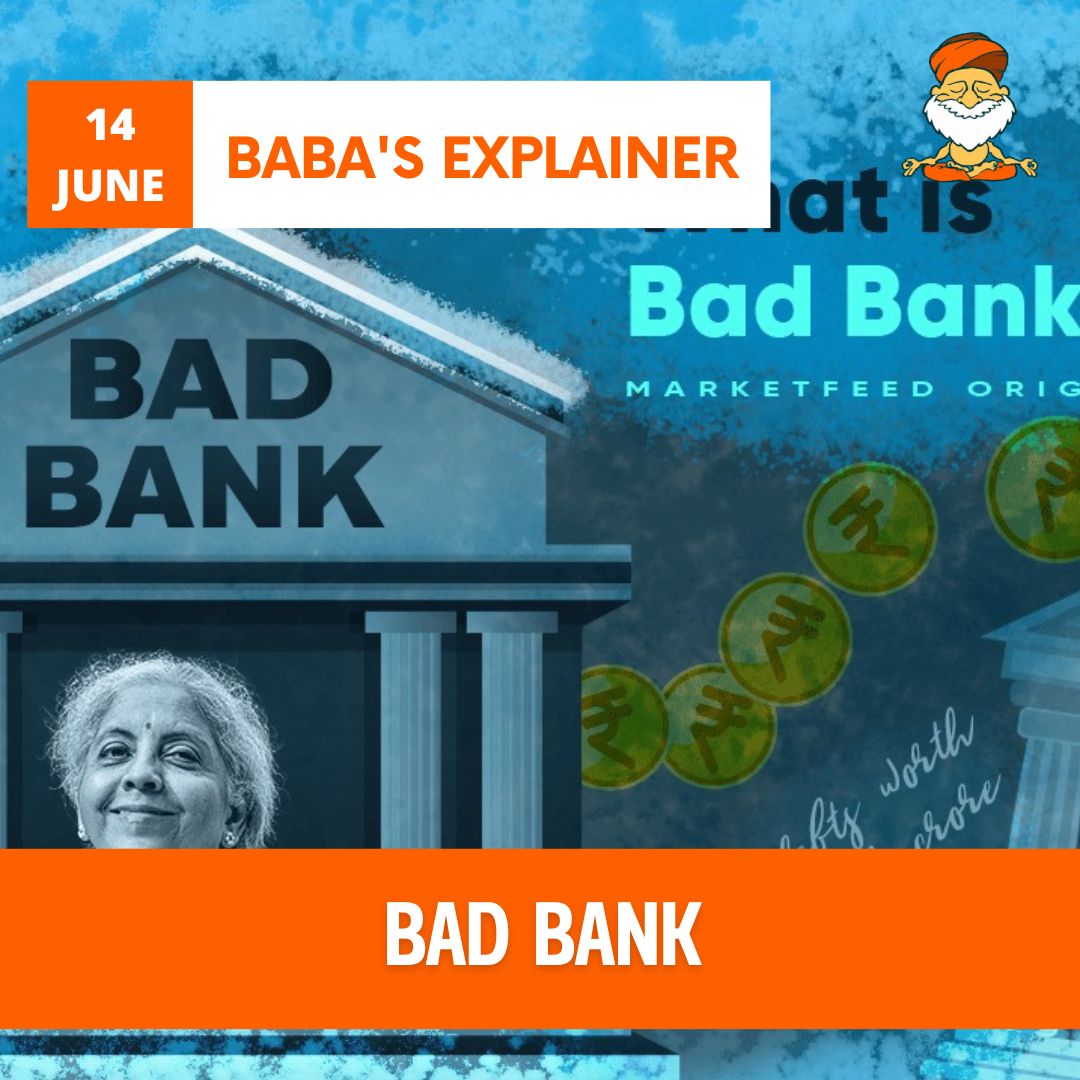IASbaba's Daily Current Affairs Analysis
Archives
(PRELIMS & MAINS Focus)
Syllabus
- Prelims – Current Affairs
- Mains – GS 2 (Social issues)
In News: Centre begins supply of fortified rice in 90 districts from April 1
- The Centre has started distribution of fortified rice through ration shops from April 1 in some 90-odd districts out of 291 targeted for the entire year under phase II of PM-POSHAN Abhiyan
- The first phase was launched in October 2021 under which fortified rice was supplied through Integrated Child Development Services (ICDS) and Pradhan Mantri Poshan Shakti Nirman-PM POSHAN
- Fortified rice is made as per the standards fixed by the food safety regulator FSSAI, which has prescribed blending rice with three micronutrients – Iron, Folic Acid and Vitamin B12.
Need for rice fortification
- India has very high levels of malnutrition among women and children. According to the Food Ministry, every second woman in the country is anemic and every third child is stunted.
- Malnutrition costs India at least ₹77,000 crore annually in terms of lost productivity, illness and death.
- The country loses about 1 per cent of GDP (₹2.03 lakh crore) due to iron deficiency
- One rupee spent on nutritional interventions in India could generate ₹34.1-Rs 38.6 in public economic returns
- Rice is one of India’s staple foods, consumed by about two-thirds of the population. Per capita rice consumption in India is 6.8 kg per month. Therefore, fortifying rice with micronutrients is an option to supplement the diet of the poor.
POSHAN Abhiyaan
- POSHAN Abhiyaan is the flagship program to improve nutritional outcomes for children, pregnant women, and lactating mothers in India.
- It is also called the National Nutrition Mission.
Salient Features of the POSHAN Abhiyan
- The POSHAN (Prime Minister’s Overarching Scheme for Holistic Nutrition) Abhiyaan spreads awareness towards the problems pertaining to malnutrition and brings viable solutions with it.
- Implementation status reports of the Abhiyaan are submitted by NITI Aayog every six months.
- The implementation of POSHAN Abhiyaan is carried out through the Technical Support Unit (TSU) established at NITI Aayog, which will also provide research, policy, and technical support for the program.
- As the mission is expected to eradicate malnutrition by 2022, it has been taken up by multiple ministries. This helps in expanding the outreach of the mission and thereby facilitating its implementation.
- Some specific targets of the program are reducing stunting, anemia, under-nutrition, and low birth weight.
Specific Targets of the POSHAN Abhiyan
The POSHAN Abhiyan aims to target the following specifically:
- Reduce stunting by 2% annually.
- Reduce under-nutrition by 2% annually.
- Reduce anemia by 3% annually.
- Reduce low birth weight by 2% annually.
Source: Business Line
Previous Year Questions
Q.1) Genetically modified “golden rice” has been engineered to meet human nutritional requirements. Which one of the following statements best qualifies golden rice? (2010)
- The grains have been fortified with genes to provide three times higher grain yield per acre than other high yielding varieties.
- Its grains contain pro-vitamin A which upon ingestion is converted to vitamin A in the human body.
- Its modified genes cause the synthesis of all the nine essential amino acids.
- Its modified genes cause the fortification of its grains with vitamin D.
Syllabus
- Prelims – Current Affairs
- Mains – GS 2 (International Relations)
In News: China takes over as biggest importer of Indian broken rice
- China emerged as the top buyer of Indian rice during the pandemic, with the import of 7.7 per cent — of India’s total rice export in financial year 2021-22
- The analysis shows that out of China’s total rice import from India of 16.34 LMT, nearly 97 per cent was broken rice, which has seen a spike in demand from that country.
- Thus making China the top buyer of Indian broken rice, which was earlier, exported mostly to African countries.

Rice exports of India
- In 2021-22, India’s total rice exports — both basmati and non-basmati — was 212.10 LMT, which is 19.30 per cent higher than 177.79 LMT exported in 2020-21
- Of India’s total rice export in 2021-22, basmati rice accounted for 39.48 LMT, which was 14.73 per cent lower than 46.30 LMT exported in 2020-21.
- Non-basmati rice accounts for the lion’s share in the basket of Indian rice exports.
- During 2021-22, export of rice other than basmati was 172.62 LMT, which was 31.27 per cent higher than 131.49 LMT in 2020-21.
Reasons for import by China
- The reason for this increase in export of broken rice to China is the higher demand of rice for making noodles and wine in that country.
Source: Indian Express
Previous Year Questions
Q.1) Among the following, which one is the largest exporter of rice in the world in the last five years? (2019)
- China
- India
- Myanmar
- Vietnam
Syllabus
- Prelims – Geography – Map Based
- Mains – GS 3 (Environment)
In News: This year, for the first time in its centuries-long history, Iraq Lake Sawa dried up
- A combination of mismanagement by local investors, government neglect and climate change has ground down its azure shores to chunks of salt.
Sawa Lake
- Sawa Lake is an endorheic basin located in the Iraqi governorate of Muthanna near to the Euphrates River
- This lake has no inlet or outlet, but it draws water from the Euphrates through a system of joint cracks and fissures which transport water to aquifers beneath it.
- The water’s level fluctuates during dry and wet seasons
- Sawa Lake is characterized by arid climate
- Because of its saline water, no plants grow in the lake or on its shores. Fish and algae are the most important aquatic organisms.

Source: India Today
Previous Year Questions
Q.1) Which of the following has/have shrunk immensely/dried up in the recent past due to human activities? (2018)
- Aral Sea
- Black Sea
- Lake Baikal
Select the correct answer using the code given below:
- 1 only
- 2 and 3 only
- 2 only
- 1 and 3 only
Syllabus
- Prelims – Science and Technology
In News: Former Twitter CEO Jack Dorsey recently announced his vision for a new decentralized web platform that is being called Web 5.0
What do the terms Web 1.0, Web 2.0 and Web 3.0 mean?
- Web 1.0 was the first generation of the global digital communications network.
- It is often referred to as the “read-only” Internet made of static web-pages that only allowed for passive engagement.
- The next stage in the evolution of the web was the “read and write” Internet.
- Users were now able to communicate with servers and other users leading to the creation of the social web. This is the World Wide Web that we use today.
- Web 3.0 is an evolving term that is used to refer to the next generation of Internet – a “read-write-execute” web – with decentralization as its bedrock.
- It speaks about a digital world, built leveraging the blockchain technology, where people are able to interact with each other without the need of an intermediary.
- Web 3.0 will be driven by Artificial Intelligence and machine learning where machines will be able to interpret information like humans.
What is Web 5.0?
- Web 5.0 is aimed at “building an extra decentralized web that puts you in control of your data and identity”.
- Simply put, Web 5.0 is Web 2.0 plus Web 3.0 that will allow users to ‘own their identity’ on the Internet and ‘control their data’.
- Both Web 3.0 and Web 5.0 envision an Internet without threat of censorship – from governments or big tech, and without fear of significant outages.
What are the use cases for Web 5.0?
- The control of identity
- Giving users control over their own data
Source: Indian Express
Previous Year Questions
Q.1) With reference to “Blockchain Technology”, consider the following statements: (2020)
- It is a public ledger that everyone can inspect, but which no single user controls.
- The structure and design of blockchain is such that all the data in it are about cryptocurrency only.
- Applications that depend on basic features of blockchain can be developed without anybody’s permission.
Which of the statements given above is/are correct?
- 1 only
- 1 and 2 only
- 2 only
- 1 and 3 only
Syllabus
- Prelims – Science
In News: Recently, the Indian Council of Medical Research (IMCR) released guidelines for the diagnosis, treatment, and management for type-1 diabetes.
- This is the first time the ICMR has issued guidelines specifically for type 1 diabetes, which is rarer than type 2 — only 2% of all hospital cases of diabetes in the country are type 1 — but which is being diagnosed more frequently in recent years.
- Type 1 diabetes is a condition where the pancreas completely stops producing insulin, the hormone responsible for controlling the level of glucose in blood by increasing or decreasing absorption to the liver, fat, and other cells of the body.
- Type 1 diabetes is predominantly diagnosed in children and adolescents.
- Although the prevalence is less, it is much more severe than type 2.
- Unlike type 2 diabetes where the body produces some insulin and which can be managed using various pills, if a person with type 1 diabetes stops taking their insulin, they die within weeks. The body produces zero insulin

How rare is it?
- There are over 10 lakh children and adolescents living with type 1 diabetes in the world, with India accounting for the highest numbers.
- Of the 5 lakh people living with type 1 diabetes in India, 90,000 to 1 lakh are under the age of 14 years. For context, the total number of people in India living with diabetes was 7.7 crore in 2019
Who is at risk of type 1 diabetes?
- The exact cause of type 1 diabetes is unknown, but it is thought to be an auto-immune condition where the body’s immune system destroys the islets cells on the pancreas that produce insulin.
- Genetic factors play a role in determining whether a person will get type-1 diabetes.
- The presence of certain genes is also strongly associated with the disease.
- For example, the prevalence of genes called DR3-DQ2 and DR4-DQ8 is 30-40% in patients with type 1 diabetes as compared to 2.4% in the general population.
What are the guidelines?
- The guidelines provide details on diet and exercise, insulin monitoring, and prevention and treatment of complications such as retinopathy, kidney disease, and nerve disease.
Source: Indian Express
Baba’s Explainer – Bad Bank: NARCL & IDRCL

Syllabus
- GS-3: Indian Economy and issues relating to planning, mobilization, of resources, growth, development and employment.
Context: Finance Minister Nirmala Sitharaman recently announced that the National Asset Reconstruction Company (NARCL) along with the India Debt Resolution Company (IDRCL) will take over the first set of bad loans from banks and try to resolve them.
- While the problem of bad loans has been a perennial one in the Indian banking sector, the decision to set up a bad bank was taken by the Union government during the Budget presented in 2021.
Read Complete Details on Bad Bank: NARCL & IDRCL
Daily Practice MCQs
Q.1) Lake Sawa which recently dried up is located in which of the following country?
- Iran
- Iraq
- Uzbekistan
- Turkmenistan
Q.2) Consider the following statements
- POSHAN Abhiyaan program covers pregnant women and children but excludes lactating mothers
- The implementation of POSHAN Abhiyaan is carried by Technical Support Unit (TSU) established at NITI Aayog
Choose the incorrect statements:
- 1 only
- 2 only
- Both 1 and 2
- Neither 1 nor 2
Q.3) Consider the following statements
- State Food Safety Index (SFSI) is published by NITI AAYOG in collaboration with Food and Agriculture Organization
- Training and Capacity Building parameter has the lowest weightage among the five key parameters considered.
- Tamil Nadu with an overall score of 82 topped the index
Choose the correct statements:
- 1 only
- 1 and 3
- 1, 2 and 3
- 2 and 3
Comment the answers to the above questions in the comment section below!!
ANSWERS FOR ’14th JUNE 2022 – Daily Practice MCQs’ will be updated along with tomorrow’s Daily Current Affairs.
ANSWERS FOR 13th JUNE 2022 – Daily Practice MCQs
Q.1) – d
Q.2) – a
Q.3) – c











